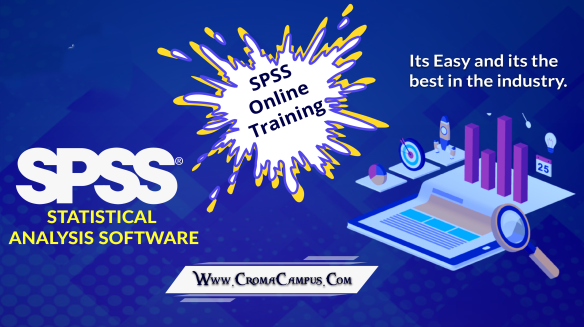How to Use SPSS for T-Tests and ANOVA?

If you’ve ever worked with data and needed to compare groups — like men vs women, before vs after scores, or responses from three different teams — you’ve likely used SPSS for it. But many learners use SPSS without really understanding what it’s doing in the background. It’s not just about clicking the right menu. It’s about knowing how these tests actually work and why SPSS gives certain results.
Whether you are studying psychology, business, or research and working toward an SPSS Certification, this knowledge can help you interpret your results with more confidence.
In cities like Delhi, where data-driven roles are increasing in research firms, NGOs, and academic projects, employers expect you to know more than just running a test. You need to know how to explain what the result actually means. Several South Delhi organizations now ask candidates to show full SPSS outputs with clear explanations — something many training courses don’t teach properly.
What Is a T-Test in SPSS and What Does It Actually Do?
A T-Test is used when you want to compare the average (mean) between two groups. Let’s say you want to know if males and females have different average income levels. In SPSS, this is called an Independent Samples T-Test.
Most learners just run the test and look at the p-value (the significance level). But SPSS is doing more than that. It:
- Checks if the difference between group averages is real or just due to chance
- Uses a formula based on how big your sample is and how much variation there is in the data
- Runs something called Levene’s Test to check if the groups have similar or different variances (spread)
If you’ve attended proper SPSS Training, you’d know that ignoring the Levene’s Test and just trusting the main result can lead to wrong decisions.
How Paired T-Tests Work Differently in SPSS?
A Paired Samples T-Test is used when you are comparing the same group of people at two different times — like test scores before and after a training program.
Instead of comparing two separate groups, SPSS looks at the difference in scores for each person. Then it checks if the average difference is large enough to be meaningful.
SPSS also:
- Calculates the average difference
- Measures how much that difference varies
- Tests if this average difference is likely to happen by chance
Many users treat this like the regular T-Test — but it’s not the same at all. you are looking at change within the same group, not comparing two different ones.
In a proper SPSS Training Institute in Delhi, this test is taught using examples like weight loss before and after a diet plan or confidence levels before and after a public speaking course.
What Does ANOVA Do and How Is It Different?
When you need to compare more than two groups, you don’t use a T-Test — you use ANOVA (Analysis of Variance).
Let’s say you want to compare satisfaction scores from employees in three departments. ANOVA checks if any one group is significantly different from the others. It looks at:
- The average difference between the groups
- The variation within each group
- Then calculates a ratio, called the F-statistic
SPSS gives you:
- The F-value
- A p-value to check if the result is significant
- The option to run Post Hoc tests (extra tests to show which groups are different)
This is very important: ANOVA only tells you that a difference exists — not where it is. If you skip the Post Hoc test, you won’t know which group is different.
Unfortunately, many learners skip this step or don’t understand the difference between these results. In good SPSS Training, this is explained with real-world examples — like comparing customer satisfaction from three different cities.
How SPSS Group Comparison Tests Differ?
| Test Type | When to Use | SPSS Checks For | Common Mistake |
| Independent T-Test | Compare 2 separate groups (e.g., male/female) | Mean difference, equal variance | Ignoring Levene’s Test |
| Paired T-Test | Compare same group at 2 times (pre/post) | Mean difference within group | Treating it like two groups |
| One-Way ANOVA | Compare 3+ groups (e.g., 3 departments) | Difference between group averages | Skipping Post Hoc tests |
Why Assumptions Matter More Than the Button Click?
No matter how easy SPSS makes it to run a test, it cannot fix bad assumptions. A good SPSS Training Institute in Delhi will show you how to check these assumptions step by step. They often use real datasets from Delhi’s NGOs, hospitals, or universities so that learners practice on realistic problems.
Key Takeaways
- SPSS doesn’t just run tests — it checks conditions and uses specific formulas behind the scenes.
- T-Tests come in two types: use Independent when comparing different groups and Paired when comparing before-and-after for the same group.
- ANOVA is for comparing more than two groups but requires extra tests (Post Hoc) to find which group differs.
- Simply knowing where to click in SPSS isn’t enough — you must understand the logic to use it correctly.
Conclusion
In growing research and analytics roles across Delhi, skills like interpreting output, testing assumptions, and choosing the right method are more in demand than ever. A proper SPSS Training Institute in Delhi will help you master not just the tool — but the thinking behind every click.



